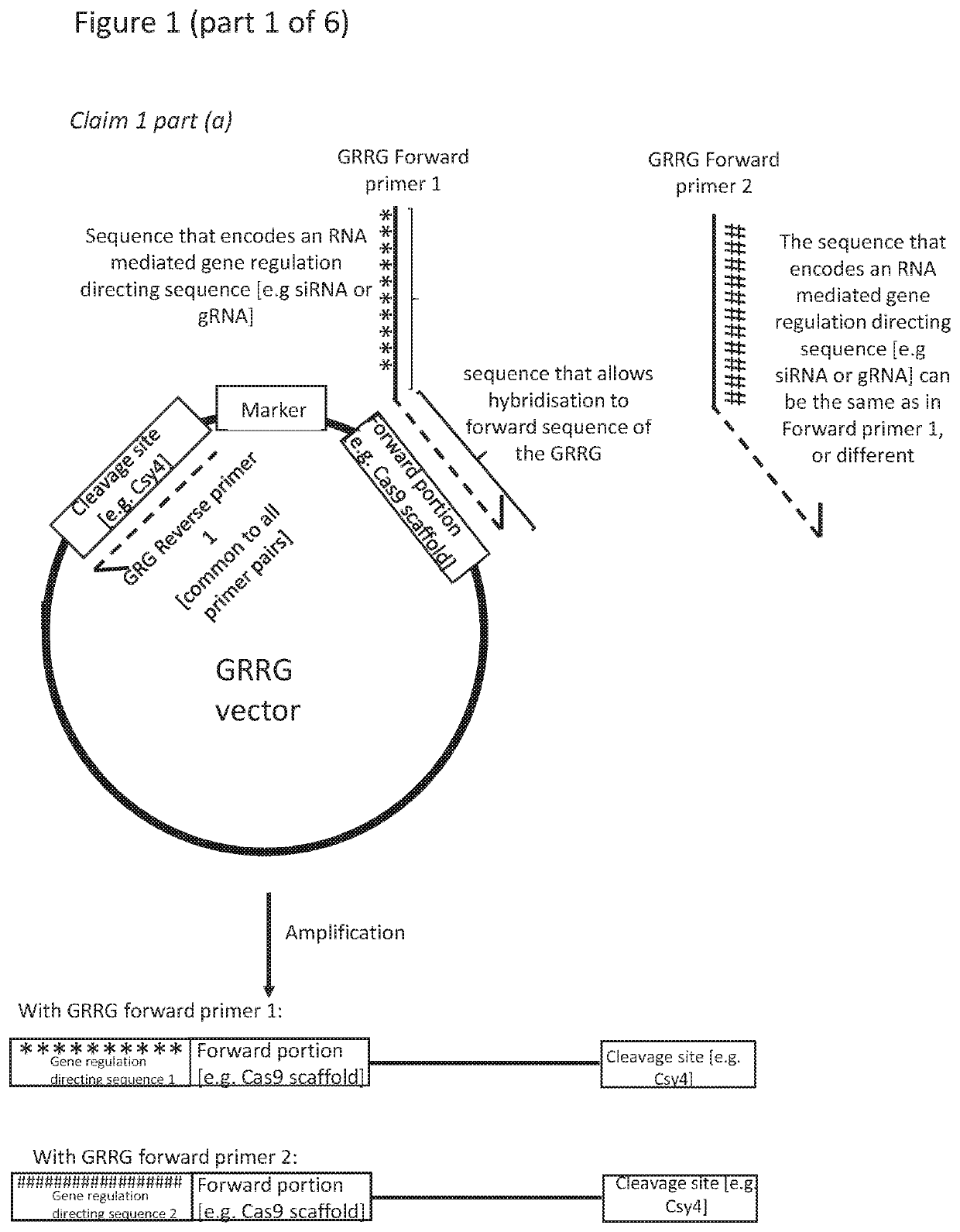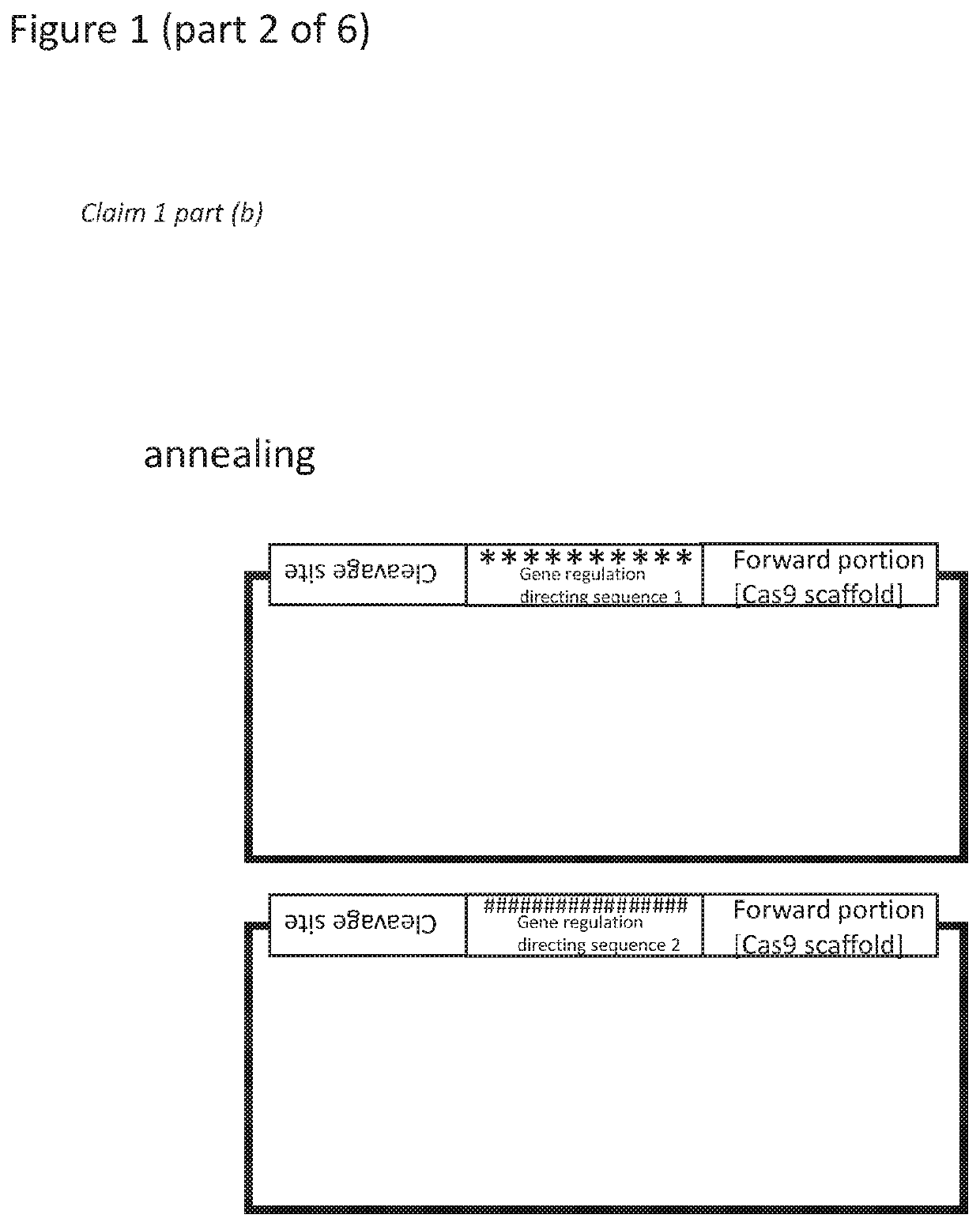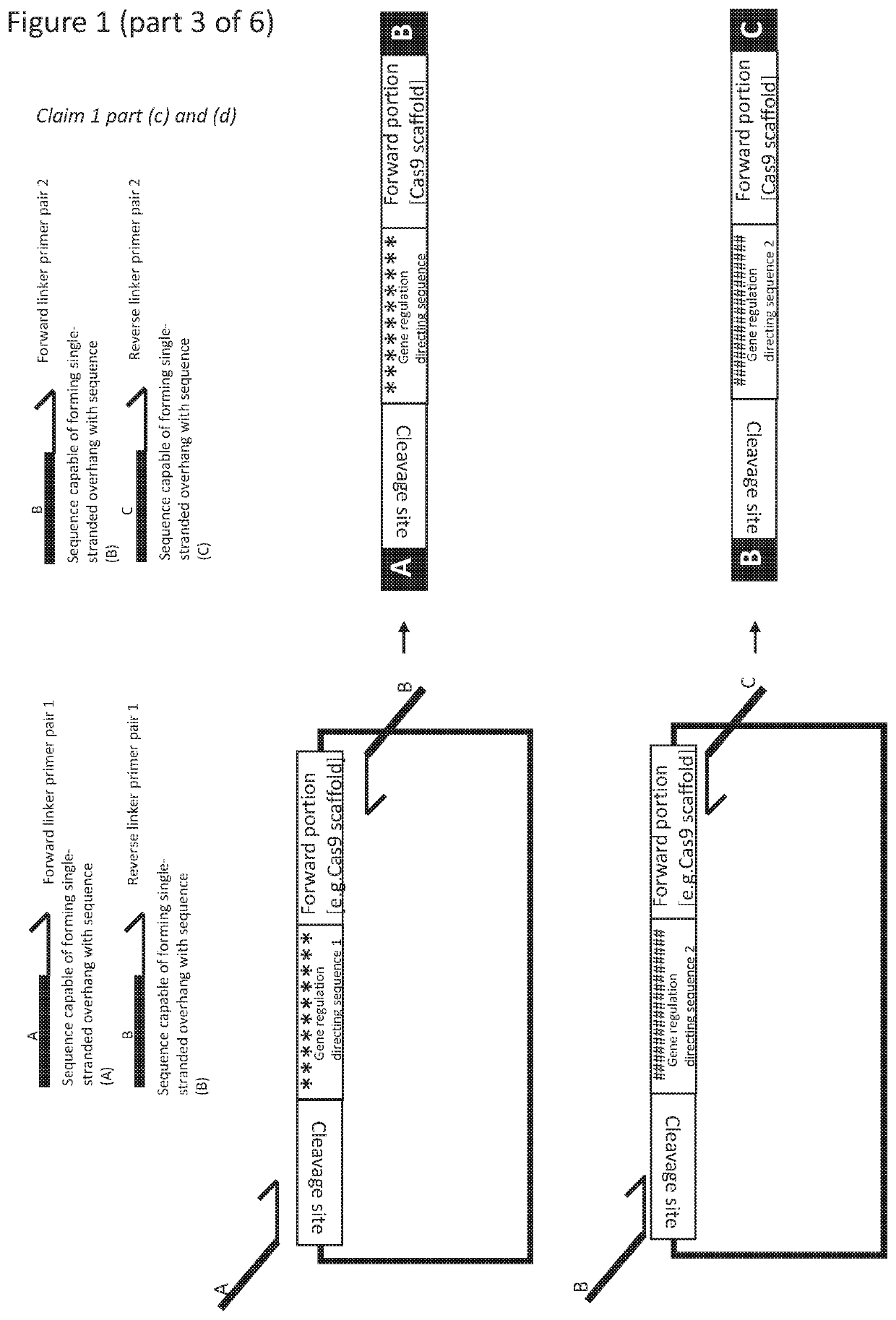RNA mediated gene regulating methods
a gene regulation and gene technology, applied in the field of rna mediated gene regulation and gene editing, can solve the problems of not allowing all of the individual rna polymers (and grnas) to be active, and achieve the effect of improving the polymer
- Summary
- Abstract
- Description
- Claims
- Application Information
AI Technical Summary
Benefits of technology
Problems solved by technology
Method used
Image
Examples
example
[0068]
[0069]The mature miRNA is shown with (*). Using the present methods, the entire, pre-processed sequence can be added to an RNA mediated gene regulating nucleic acid construct using a single primer. (Agranat-Tamir et al 2014 NAR 42: 4640-4651).
[0070]Key proteins of the microprocessor are DGCR8, which binds the RNA molecule, and Drosha, an RNase III type enzyme, which cleaves the primary (pri) miRNA transcript into a precursor (pre) miRNA stem-loop molecule of ˜70-80 bases. In the second step, which occurs after its export by exportin-5 to the cytoplasm, the pre-miRNA is cleaved by the RNase III Dicer yielding mature miRNA and its complementary miRNA*. The miRNA is then loaded on the RNA-induced silencing complex (RISC), which directs its binding to its target gene.
[0071]Small nucleolar RNAs, or snoRNAs, are typically encoded in the introns of genes. Around 300 have been identified in the human genome. There are three types of snoRNA, the C / D box type, the H / ACA box type, and th...
example 1
[0393]The efficiency of CHORDS assembly was tested for the construction of highly repetitive DNA sequences. As a proof-of-concept, a series of gRNA arrays were built containing an increasing number of gRNAs (3, 6, 9 or 12) within a single transcriptional unit (FIG. 2a). Components compatible with the YTK were created due to the expansive use of this toolkit in synthetic biology research and the total absence of existing multiplexing gRNA systems for yeasts, the most industrially-relevant organism.
[0394]Briefly, PCR with a high-fidelity Phusion polymerase was used to add the gRNA sequence of interest to a Guide-Generating Vector, which consists of a 20 nt Csy4 recognition site followed by a superfolder GFP gene and a 3′ Cas9 scaffold. The forward primer adds the gRNA targeting sequence via primer overhangs, while a phosphorylated reverse primer completes replication of the PCR fragment and results in dropout of the sfGFP, which facilitates E. coli colony screening. The resulting, lin...
example 2
[0402]CHORDS Assembly
[0403]CHORDS assembly is a dual PCR, Type IIs Golden Gate method for constructing transcriptional units that contain repetitive DNA sequences flanked by short, variable DNA sequences. Dual PCR, in this case, refers to the two separate rounds of PCR which are performed in CHORDS assembly. After the two rounds of PCR, a Golden Gate reaction is performed to join all of the PCR fragments generated together in a one-pot reaction. FIG. 4 is a schematic / experimental guideline for performing CHORDS assembly. In the text that follows, the use of CHORDS for the assembly of highly repetitive gRNA arrays that are compatible with the Yeast Toolkit is described. However, it is strongly suspected that these primers and vectors could be modified for the assembly of other repetitive sequences, such as gRNAs flanked by introns or tRNAs, or to assemble repetitive Spinach aptamers.
[0404]The first step in CHORDS assembly to build gRNA arrays is to perform PCR on a ‘Guide-Generating ...
PUM
| Property | Measurement | Unit |
|---|---|---|
| temperature | aaaaa | aaaaa |
| temperature | aaaaa | aaaaa |
| temperature | aaaaa | aaaaa |
Abstract
Description
Claims
Application Information
 Login to View More
Login to View More - R&D
- Intellectual Property
- Life Sciences
- Materials
- Tech Scout
- Unparalleled Data Quality
- Higher Quality Content
- 60% Fewer Hallucinations
Browse by: Latest US Patents, China's latest patents, Technical Efficacy Thesaurus, Application Domain, Technology Topic, Popular Technical Reports.
© 2025 PatSnap. All rights reserved.Legal|Privacy policy|Modern Slavery Act Transparency Statement|Sitemap|About US| Contact US: help@patsnap.com



